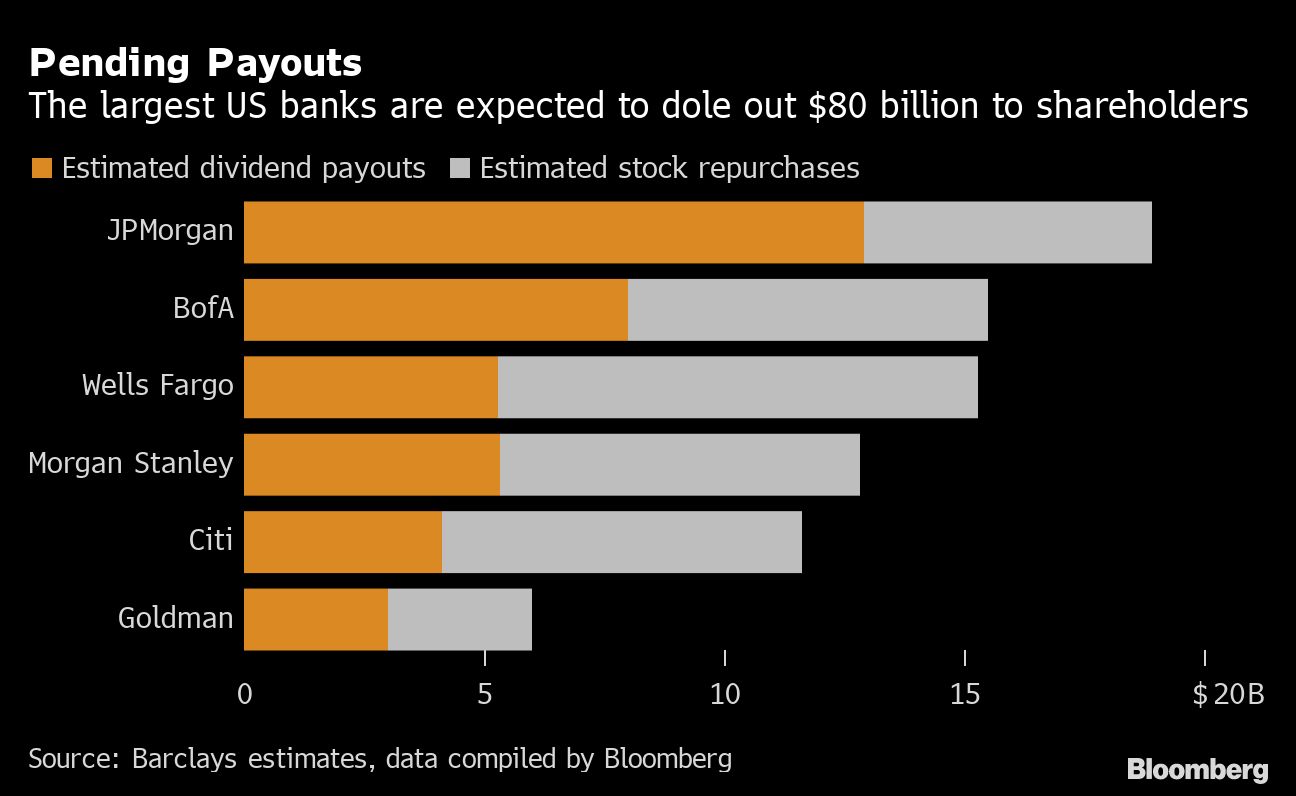Banks ace Fed stress tests, pave way for shareholder payouts
Wall Street’s biggest banks are set to return tens of billions of dollars to investors after all the lenders passed the Federal Reserve’s annual test of their ability to withstand market turmoil.
The banks examined showed that they had enough capital to handle a cocktail of surging unemployment, collapsing real-estate prices and a plunge in stocks, the Fed said in a statement Thursday. Major firms including JPMorgan Chase & Co., Morgan Stanley and Goldman Sachs Group Inc. also faced a made-up market shock that tested the resiliency of their trading operations.
While the terms of the tests were announced in February before US inflation had surged to a 40-year high, the scenarios no longer seem as far-fetched amid mounting concerns of a global economic slowdown. The passing marks effectively give banking giants a green light to return billions of dollars to investors in dividends and share buybacks.
“Banks continue to have strong capital levels, allowing them to continue lending to households and businesses during a severe recession,” the Fed said in the statement.
The Fed said the more than 30 lenders it examined were able remain above their minimum capital requirements during the hypothetical economic meltdown, which would have caused them total projected losses of $612 billion.
Lenders use the tests to assess how much capital they can afford to dole out to investors without falling below the amount they are required to hold as a cushion. If a firm breaches its so-called stress capital buffer at any point in the year following the exams, the Fed can apply sanctions, including restrictions on capital distributions and bonus payments.

With their results in hand, banks can announce their payout plans starting Monday. Estimates by Barclays Plc analysts indicate that JPMorgan is set to lead the way with $18.9 billion in combined dividends and share buybacks, followed by Bank of America Corp. and Wells Fargo & Co. with $15.5 billion and $15.3 billion, respectively. In all, US banking giants are set to return $80 billion to shareholders this year, according to data compiled by Bloomberg based on the projections.
“The nation’s largest banks remain well-positioned to absorb a range of potential economic shocks while continuing to support their customers, clients and communities,” Rob Nichols, president of the American Bankers Association, said in a statement. “The industry’s strong balance sheets and high capital levels ensure banks can make the loans that drive our economy even if they face substantial headwinds.”
Last year, dividend payouts by the nation’s six largest lenders rose by almost half after the country’s largest banks amassed mountains of excess capital during the pandemic. Morgan Stanley alone doubled its quarterly payout while also announcing as much as $12 billion in stock buybacks.
The Fed’s 2022 stress tests included “a severe global recession accompanied by a period of heightened stress in commercial real estate and corporate debt markets,” according to the Fed’s website. In a sign of the Covid-19 pandemic’s impact, the hypothetical downturn “is amplified by the prolonged continuation of remote work, which leads to larger commercial real estate price declines that, in turn, spill over to the corporate sector and affect investor sentiment.”
The scenario featured a peak US unemployment rate of 10%, a real gross domestic product decline of 3.5% from the end of last year and a 55% drop in equity prices. It also incorporates a sharp decline in inflation to an annual rate of 1.25% in the third quarter of 2022 on higher unemployment and lower demand.
— By Hannah Levitt and Ben Bain (Bloomberg)

















